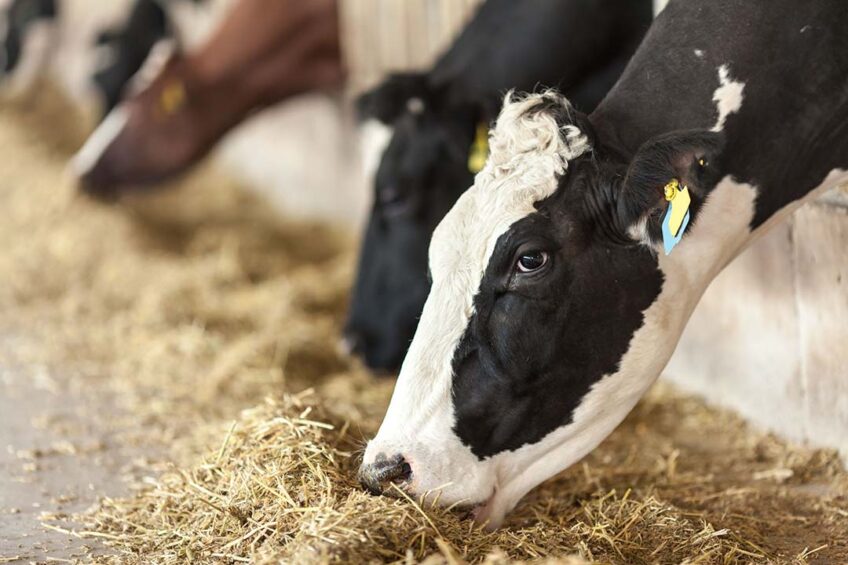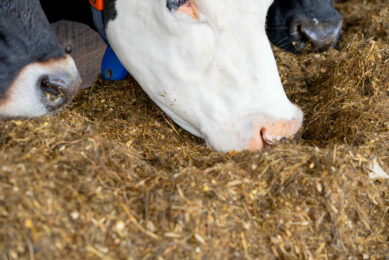Feeding dairy cows lower crude protein diets

Higher costs of milk production and tighter manure nitrogen regulations, coupled with challenges associated with ammonia emissions in many countries, has led to an increase in the interest of feeding lower crude protein diets to dairy cows.
Most legume-silage studies have focused on alfalfa silage, which prompted scientists from Harper Adams University to examine the effects of dietary crude protein content and supplementing a low crude protein diet with dietary starch or rumen-protected Met (RPMet) on the performance, metabolism and nitrogen use efficiency in dairy cows fed a red clover and grass-based silage.
The study
A total of 56 Holstein Friesian dairy cows were blocked and randomly allocated to 1 of 4 diets over a 14-week feeding period. Diets were based on red clover and grass silages at a ratio of 50:50 (dry matter basis) and were fed as a total mixed ration, with a forage-to-concentrate ratio of 53:47 (dry matter basis). The diets were formulated to supply a similar metabolisable protein (MP) content and have a crude protein concentration of 175 g/kg dry matter (CON), or 150 g/kg dry matter (LP = low protein), or LP supplemented with additional barley as a source of starch (+64 g/kg dry matter; LPS) or RPMet (+0.3 g/100 g MP; LPM).
At the end of the 14-week feeding period, 20 cows (5 per treatment) continued to be fed the same diets for a further 6 days and total urine output and faecal samples were collected. The researchers observed that dietary treatment did not affect dry matter intake, with a mean of 21.5 kg/d. However, there was an interaction between diet and week with intake being highest in cows fed LPS in week 4 and CON in week 9 and 14.
Results
Mean milk yield, 4% fat corrected milk and energy corrected milk were not altered by treatment. Similarly, the study found no effect of dietary treatment on milk fat, protein or lactose content. In contrast, milk and plasma urea concentrations were highest in cows fed CON. The concentration of blood plasma β-hydroxybutyrate was highest in cows receiving LPM and lowest in LPS. Apparent nitrogen use efficiency was 28.6% in cows fed CON and was higher in cows fed any of the low protein diets (LP, LPS or LPM) with a mean value of 34.2%.
The sum of milk fatty acids with a chain length below C16:0 was also highest in cows fed CON. We observed that dietary treatment did not affect the apparent whole-tract nutrient digestibility of organic matter, N, neutral detergent fibre and acid detergent fibre, with mean values of 0.785, 0.659, 0.660 and 0.651 kg/kg respectively, but urinary nitrogen excretion was approximately 60 g/d lower in cows fed the low crude protein diets compared with CON.
In conclusion, the team found that reducing the crude protein content of red clover and grass silage-based diets from 175 to 150 g/kg DM while maintaining MP supply did not affect performance, but reduced the urinary nitrogen excretion and improved nitrogen use efficiency , and that supplementing additional starch or RPMet had little further effect.
Join 13,000+ subscribers
Subscribe to our newsletter to stay updated about all the need-to-know content in the dairy sector, two times a week.










